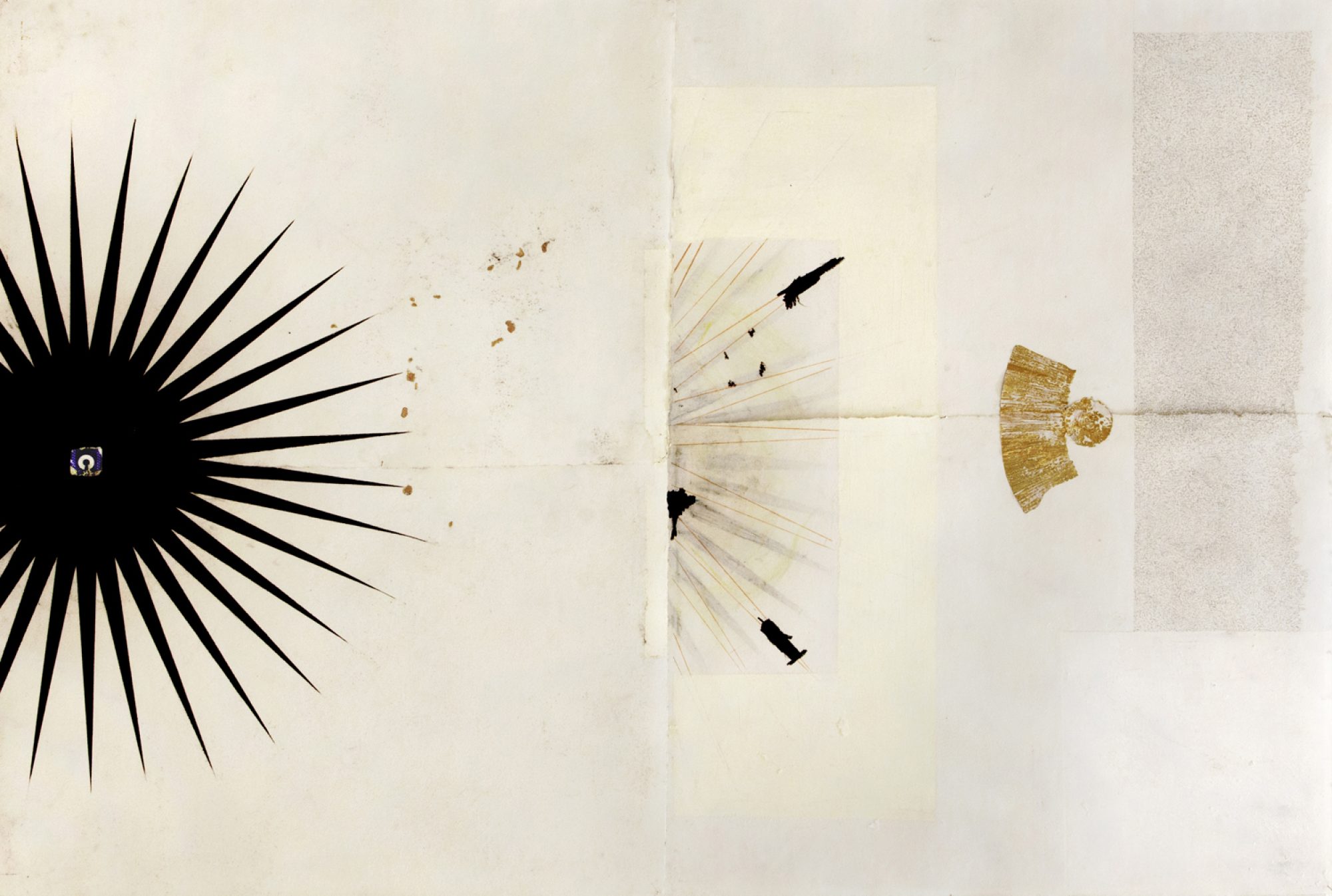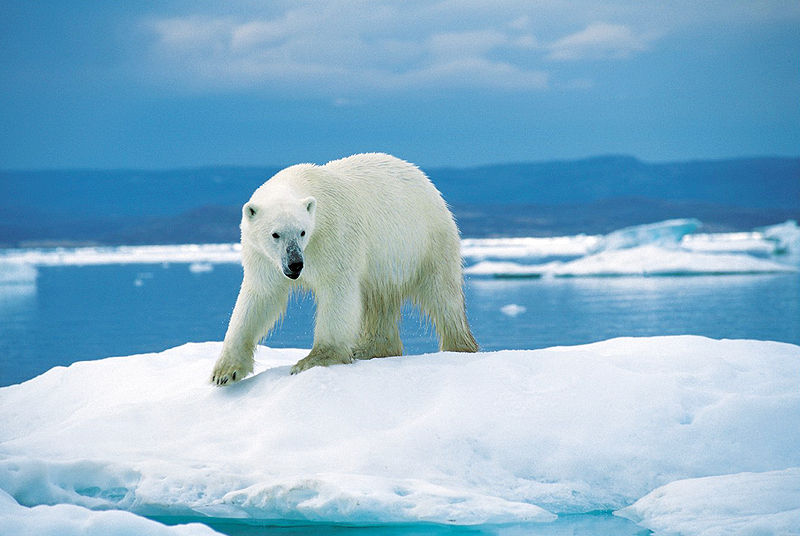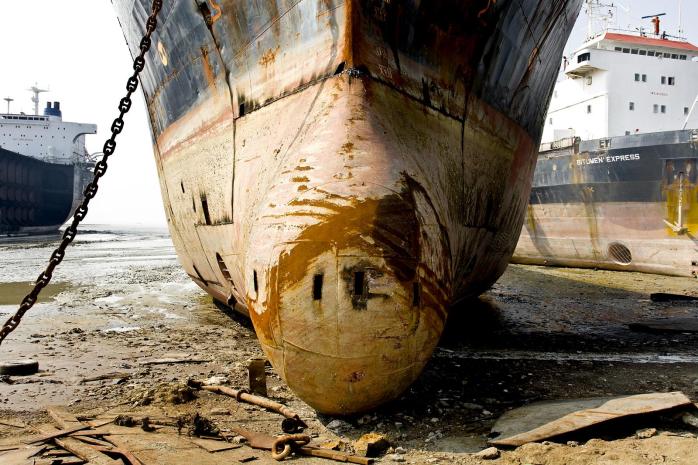Dan Zak has a new article in the Washington Post which is, as much as anything, brief history of the messaging surrounding climate change. It nicely illustrates the difficulty we face when discussing a topic like climate crisis or climate breakdown in the classroom or in public. In the article, Zak provides numerous examples of how different words have been appropriated and re-appropriated, how meaning has been amplified or stripped from different concepts depending on who, when, and how a given term is invoked. In one hopeful example, he states, for instance, that “women are rewording climate conversations to honor the collective, connective nature of the problem.” During this important moment more scrutiny to words will serve us well. Check out Zak’s piece.
Observations on the “Mini-Syllabus: Writing the Anthropocene”
By Alina Scott
/ (ænˈθrɒpəˌsiːn) /: the Anthropocene a proposed term for the present geological epoch (from the time of the Industrial Revolution onwards), during which humanity has begun to have a significant impact on the environment
Authors David Carlin and Nicole Walker’s Mini-Syllabus does more than introduce readers to the literature on the Anthropocene. The authors suggest that some hope for success in addressing climate change can be found in drawing from the push and pull between humanity and the forces of nature — and they have created a resource to help others do the same.
“Writers map this world from what we like to imagine is the pristine pastoral. They map the world from the gritty city. Rarely, do these two worlds overlap. But in this course, we will read authors whose work explores how these maps overlap, how the impact of humans affects every corner of the natural world and also how the natural world never abandoned the human one. Nature is everywhere. [So are humans. Humans write about themselves as much as humans make the world temperatures serve their comfort needs.] But, since humans are the only ones who read what humans write, we are going to read and write about the way humans pushed nature into their special comfort zone—and the way nature is pushing back.”
Carlin and Walker make a moving observation: “Here is the thing about the Anthropocene: Our imaginations brought us here. Perhaps there is hope that imagination, or stubbornness, that will get us out of here. “ So said, so done.
Carlin and Walker’s syllabus includes a diverse set of literature which effectively bridges the divide between academic and non-academic ways of thinking. Doing so helps them speak to the issues of despair and hope in Anthropocene.
The syllabus includes nonfiction works by Donna Haraway’s, such as Staying with the Trouble and Timothy Morton’s Hyperobjects, both of which are also included in the Radical Hope Syllabus. (See Patrick Reed’s Expecting the Unexpected, Damian White’s Design, Hybridity and Just Transitions, Tania Katzscher’s Looking at the Ordinary).
They also include works of fiction such as Tana French’s In the Woods, Jesmyn Ward’s Salvage the Bones, and Terese Svoboda’s Great American Desert. Suggested poetry includes newly appointed U.S. poet laureate Joy Harjo’s Conflict Resolution for Holy Beings and Jake Skeet’s Eyes Bottle dark with a mouthful of flowers.
The syllabus also includes extra-literary resources like Graphic Art on Climate change (Stubborn: Words by Elizabeth A. Povinelli, Illustrations by Clara Bessijelle Johansson) and 12 Artists On Climate Change: A Dozen Artistic Responses to One of the Greatest Threats of our Time (August 2018).
The syllabus is itself a creative and academic project, and its readings are both approachable and honest. “The texts combine despair with imagination because at rock bottom, and that’s when, supposedly, you build yourself back up,” the authors say. “We will read across genre because in the Anthropocene, we need every tool of the imagination to document it, elegize it, learn from it, undo it and build something less anthrocentric back up.”
This is a wonderful project that would pair nicely with the Radical Hope Syllabus and we thank the authors for their work.
Access the full syllabus here: https://entropymag.org/mini-syllabus-writing-the-anthropocene/
Image credit: Polar bear on ice flow in Wager Bay (Ukkusiksalik National Park, Nunavut, Canada) by Ansgar Walk, Wikimedia Commons
Beyond Hope and Looking at the Ordinary
Tania Katzschner
Perhaps it is more important to be in community, vulnerable and real and whole, than to be right, or to be winning — adrienne maree brown
https://orionmagazine.org/article/beyond-hope/
These times of upheaval call on us to explore new ways of coming into touch and to recognise that there are other possibilities. Many attempts to ‘save the world’ only end up reinstating the status quo. The world is bigger and more curious than solutions.
I’d like to ad the above article “Beyond Hope” by Derrick Jensen to the section of the course on ‘Looking at the ordinary – a tender practice of forging relationships’. In it
Jensen speaks of the impulse to “save” the world coming from a place of love and allowing oneself to be touched. By drawing on the idea of ‘love’, it is hoped that we can learn to see in such a way that things come alive again.
We live in incoherent times, each day the unraveling of the biosphere becomes more and more apparent with plastic landscapes, catastrophic droughts, rising carbon emissions, rising sea levels, loss of biodiversity, and the proliferation of the dreadful and horrific. How to respond to the crisis of nature that defines our time is an urgent question. The creation of a more sustainable world depends on a fundamental shift of our dominant relationship with nature. Assumptions that culture and nature occupy different dimensions are beginning to shatter and being disrupted. This moment invites us to create the means for posing problems differently.
The ‘Looking at the Ordinary’ section of the course attempts to do this by reflecting on the practices and sensibilities of a transformative urban nature project in Cape Town. The Cape Flats Nature (CFN) project aimed to “build good practice in sustainable management of City nature conservation sites in a way that benefits surrounding communites, particularly those where incomes are low and living condition poor” (Soal and van Blerk, 2005). The project risked slowing down to nurture profound levels of observation and conversation in order to protect capabilities for flourishing. The project created spaces for competing ideas, discussion and debate and helped create conditions where anything could happen, especially that which is beyond our limited knowledge of cause and effect.
I want to suggest that such work, attention and ‘love’ is helpful in imagining socio-environmentalism differently, without destroying relationships and awakening us to the possibility of a world where genuine care and concern can flourish. Such work and practice helps us to develop greater attention, awareness, openness and love. By turning the lens on feeling, learning and empathising, it disrupts the colonial stewardship and mastery idea. Could we instead be lovers of other than human beings? I believe we would do well to ‘normalise’ some of their radical, unorthodox ideas and practices around urban conservation that contribute to the birthing of a new story and narrative and to spread the vibration of love and life.
Hope in the Murky Waters of the International Shipping Industry*
Hazardous Hope Part 2 – *This post originally appeared on the Rachel Carson Center’s Blog Seeing in the Woods as part of their Hazardous Hope Series.
(*Featured image: CTG. Ship Breaking 06. Photo by Naquib Hossain [CC BY-SA 2.0], via Flickr)
This summer, I went on a field trip to Alang-Sosiya in the northwestern state of Gujarat, India, where geriatric vessels are anchored in the shipbreaking yards for their not-so-respectful funeral rights. They are taken apart bolt by bolt, rivet by rivet, down to their very last ounce of valuable metal. This place is infamously known as the “world’s largest graveyard for ships.” Despite the fact that this “recycling” is making use of vast amounts of material, the negative impacts on the environment unleashed through improper shipbreaking are substantial. Most ships are not properly cleaned of residue oils and fuel before they are sent, and they need to be meticulously dismantled in order to prevent oil spills and other toxins leaching into the environment. As I prepared for my journey, I wondered: Why is India voluntarily involved in this trade of hazardous waste? Is there an end in sight to the export of toxic waste appealingly disguised as “recycling” from the Global North to the Global South? What about the workers who survive by earning their daily living from scrapping these dead ships? As the complexity of these questions drew me towards scholarly despair and narratives of complete declensionism, I stumbled across some hopeful news: Dutch shippers had been sentenced for having demolished ships on an Indian beach. This news made me reconsider my doomy fears and instilled an idea in my head: perhaps it is possible to navigate the Indian shipbreaking industry with a vision of hope.
On 15 March 2018, the Rotterdam District Court in the Netherlands convicted Seatrade, the Groningen based shipping operator and the largest reefer operator in the world, for the illegal export of several 1984-built reefer vessels, namely: Spring Bear, Spring Bob, Spring Panda, and Spring Deli. The ships were exported for scrapping on the beaches of India, Bangladesh, and Turkey in order to save money, due to the lax environmental and safety regulations in these places. This illegal act violated the international laws governing the export of hazardous waste as well as the EU Waste Shipment Regulations (EWSR). According to these regulations, EU member states are generally prohibited from exporting hazardous waste to countries outside the membership of the Organization for Economic Cooperation and Development (OECD) and must acquire prior consent for any such exports. The company has been imposed with fines ranging between EUR 500,000 and EUR 750,000. Furthermore, two of its executives have been banned from working for any shipping company (in any capacity) for one year. A third director has been acquitted. Prison charges were waived by the judges due to the novelty of the case.

In a recent report, NGO Shipbreaking Platform stated that 835 large ocean-going commercial vessels were sold to scrap yards in 2017 alone, 543 of which were broken down on the beaches of Bangladesh, India, and Pakistan. In the light of these disturbing yet revealing data, Ingvild Jenssen, founder and director of NGO Shipbreaking Platform, welcomed “this groundbreaking judgment that sets a European-wide precedent for holding ship owners accountable for knowingly selling vessels, via shady cash-buyers, for dirty and dangerous breaking in order to maximize profits.”
What is it that makes illegal shipbreaking so dangerous to the environment? First of all, the scale of the operations. The importance of ships is often invisible to us in our day-to-day lives, yet the International Maritime Organization (IMO) statesthat “maritime transport is essential to the world’s economy as over 90 percent of the world’s trade is carried by sea and it is, by far, the most cost-effective way to move en masse goods and raw materials around the world.” But the connections between ships and toxicity are still not always obvious. What makes these floating vessels hazardous to both humans and the environment is their deaths at the substandard shipyards of the Global South, which emanate toxicity. Their rebirth is facilitated by the destructive labor forces of the shipyards through the recycling of their valuable materials, like ferrous and nonferrous components, wood, heavy machinery, and technological items in good, reusable condition. However, ships, especially those built before 1992, also contain huge quantities of toxic asbestos: a thermal insulating and fire-resistant material used in engine rooms, corridors, exhaust pipes, fireproof doors, as well as in many other places. In addition, many products on board the vessels, such as insulating materials, batteries, and electrical compounds, contain heavy metals, polychlorinated biphenyls (PCBs) in both solid and liquid forms, and Tributyltin (TBT), which is present in anti-fouling paints. Added to this expanding list of toxic materials are mineral oils, bilge, and ballast water. These polluting and hazardous contaminants become all the more life threatening when a ship is demolished—they leach into the environment and come into close contact with workers in the shipyards.

The refrigerated Spring class vessels that Seatrade exported for demolition were used for carrying both refrigerated and dry cargo and therefore contained high amounts of hydrochlorofluorocarbons (HCFCs), along with other commonly present hazardous substances. The court determined that Seatrade’s motive for selling the vessels for demolition via a cash buyer, rather than recycling the ships in a safe and clean manner, was purely financial. The district court judge said: “It is common knowledge that beaching a ship and demolishing it at the spot pollutes water and air, while untrained workers lack the expertise to deal with dangerous materials . . . These practices cause multiple deaths a year.”
To better understand the proceedings of this case, it is important to underline how waste and recycling are understood in the international laws governing the export of hazardous waste. According to EU Waste Shipment Regulations (EWSR), waste means any substance or object that a holder discards, intends to discard or is required to discard. Recycling, on the other hand, means a recovery of materials—in our case primarily steel—without endangering human health and without using processes or methods that could harm the environment. Now, the point of contestation between Seatrade and the public prosecutors was that one party claimed that they had exported the ships for recycling, while the other party charged them for exporting ships for demolition—that is, as hazardous waste. One action is legal, while the other is not.
After evaluating the prosecution’s charges, the district court judges determined that the refrigerated vessels had already been intended for demolition when they left the ports of Rotterdam and Hamburg in 2012, which would categorize the ships as waste despite the fact that they were still seaworthy, certified, insured, and operational. In Seatrade’s defense, executives claimed that the ships were sent to South Asia for “recycling.” The prosecutors countered the defense by stating that substantial quantities of hazardous waste were also exported, including at least asbestos and HCFCs, making recycling impossible given the substandard operations in place at the Indian, Bangladeshi, and Turkish shipyards.

Today, Seatrade still disagrees with the court’s judgment that “fully certified, a seaworthy vessel should be considered waste within the meaning of European Waste Shipment Regulations (EWSR) since the ships were operational till the very last moment and represented millions of euros in value at the time of sale.” The company therefore plans to proceed to the Hague Court of Appeal for acquittal from the criminal charges levied against it.
What will change with this hopeful court verdict? Authorities in Norway, Belgium, and the UK have been paying close attention to the court proceedings and the final verdict, as they are currently investigating similar cases. Seatrade’s conviction has underlined the realization by courts of law, investors, and major shipping banks that better ship recycling practices are needed and should be strictly enforced. Moreover, ship owners should be held accountable for their intentional and misinformed actions in the murky world of the international shipping industry. For me, the penalization of the shipping company has helped me to shake my doomful fears and to rethink the issue. It has helped me find hope—hope that the inhabited territories of Alang will not always be treated as a graveyard for toxic ships; hope that one day, workers will not die from slow poisoning as they dissect vessels bolt by bolt, piece by piece, with the help of only the most basic technology. If international ship owners are driven to take prior decontamination seriously, then the concept of recycling—that is the recovery of materials without harming the individuals and their environment—will become possible.
Originally posted on Seeing the Woods on 11/9/18.
Hope, Action, and Questions for Students
“Hope and its doleful twin, Hopelessness, might be thought of as the co-muses of the modern eco-narrative. Such is the world we’ve created—a world of wounds—that loss is, almost invariably, the nature writer’s subject. The question is how we relate to that loss. Is the glass ninety-five per cent empty or is it five per cent full?” This is the question Rebecca Solnit asks in her recent New Yorker article. And, it’s an important one. What role will hope play in our future? Admittedly, a limited one if it’s not accompanied by ACTION. What actions will we take in the future? Perhaps looking a which approaches to the environmental issues have been most successful in the past can serve as a useful guide. Take a look at some of the sections on the syllabus and see what an assessment of them yields.
EMB



